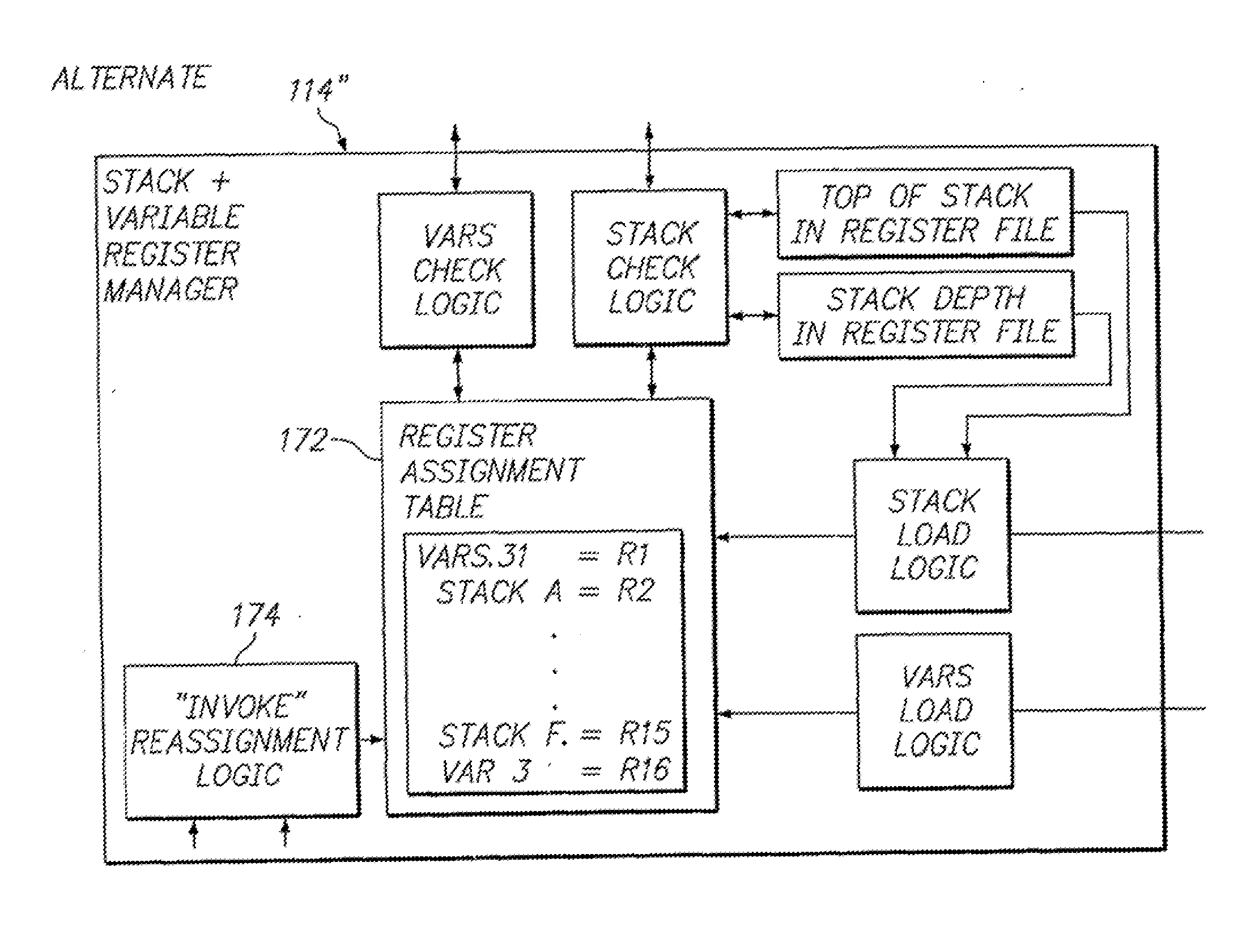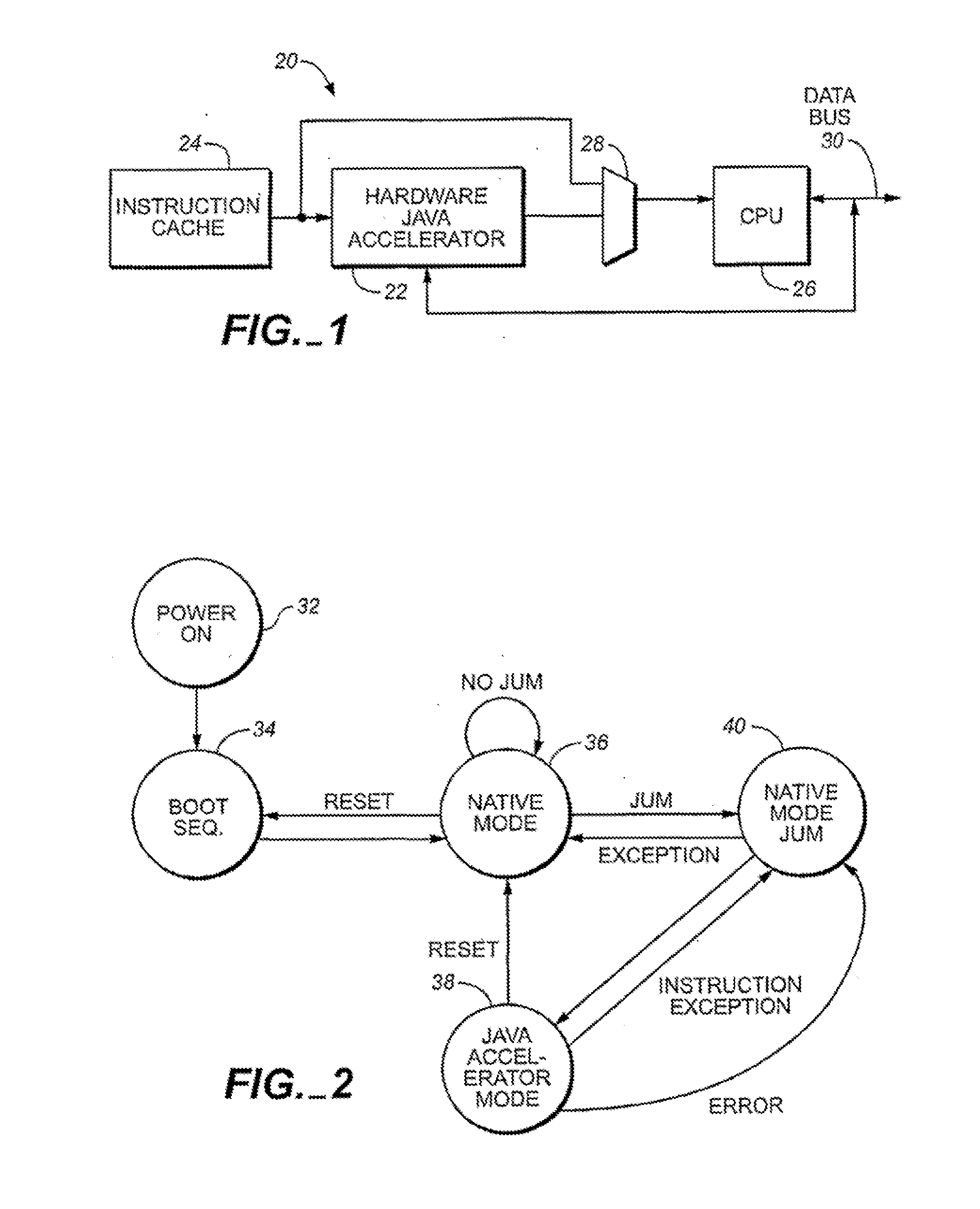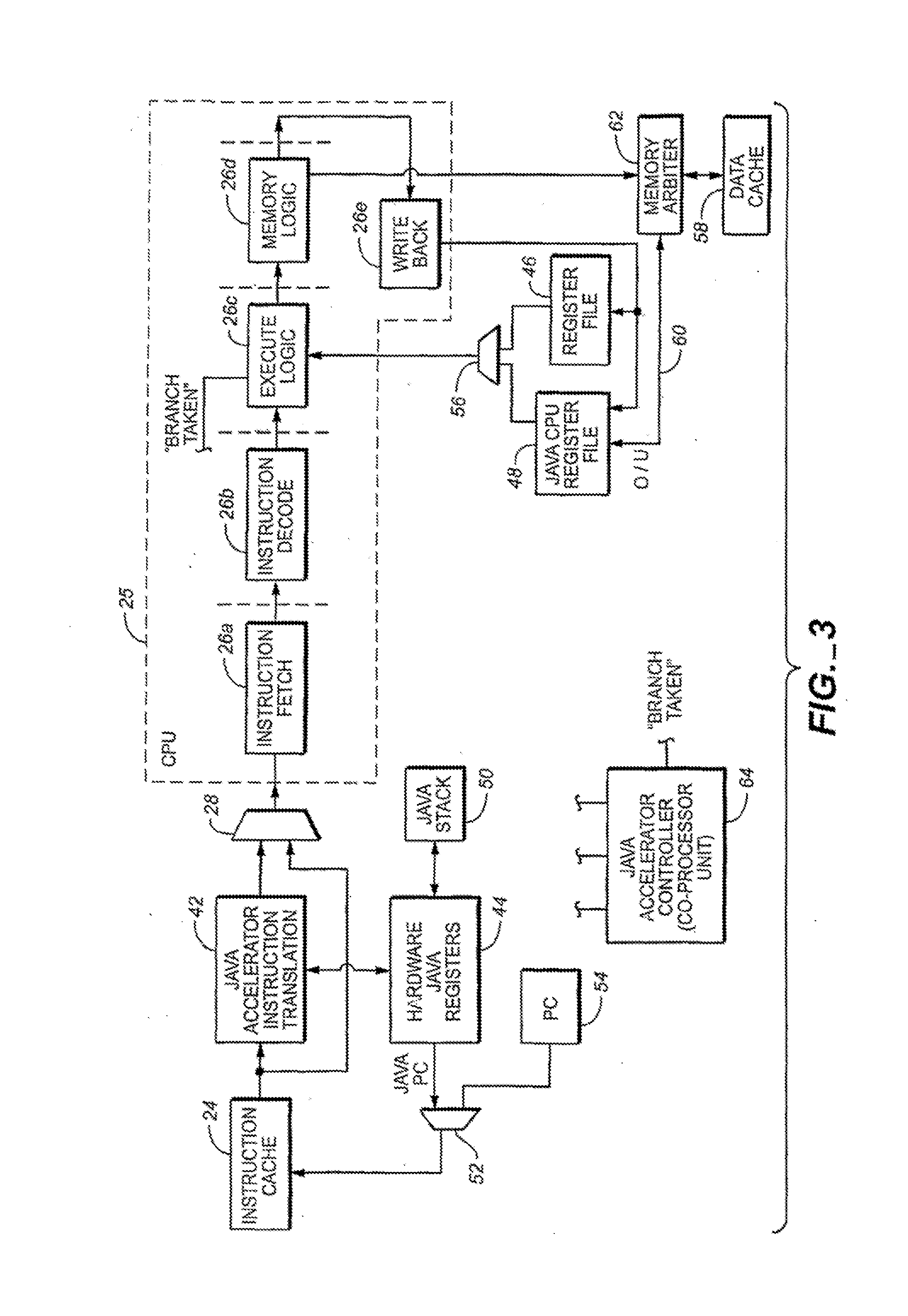JAVA hardware accelerator using microcode engine
- Summary
- Abstract
- Description
- Claims
- Application Information
AI Technical Summary
Benefits of technology
Problems solved by technology
Method used
Image
Examples
Embodiment Construction
[0033]FIGS. 1-7 illustrate the operation of the parent application.
[0034]FIG. 1 is a diagram of the system 20 showing the use of a hardware Java accelerator 22 in conjunction with a central processing unit 26. The Java hardware accelerator 22 allows part of the Java Virtual Machine to be implemented in hardware. This hardware implementation speeds up the processing of the Java bytecodes. In particular, in a preferred embodiment, the translation of the Java bytecodes into native processor instructions is at least partially done in the hardware Java accelerator 22. This translation has been part of a bottleneck in the Java Virtual Machine when implemented in software. In FIG. 1, instructions from the instruction cache 24 or other memory is supplied to the hardware Java accelerator 22. If these instruction are Java bytecode, the hardware Java accelerator 22 can convert these bytecodes into native processor instruction which are supplied through the multiplexer 28 to the CPU. If a non-...
PUM
 Login to View More
Login to View More Abstract
Description
Claims
Application Information
 Login to View More
Login to View More - R&D
- Intellectual Property
- Life Sciences
- Materials
- Tech Scout
- Unparalleled Data Quality
- Higher Quality Content
- 60% Fewer Hallucinations
Browse by: Latest US Patents, China's latest patents, Technical Efficacy Thesaurus, Application Domain, Technology Topic, Popular Technical Reports.
© 2025 PatSnap. All rights reserved.Legal|Privacy policy|Modern Slavery Act Transparency Statement|Sitemap|About US| Contact US: help@patsnap.com



